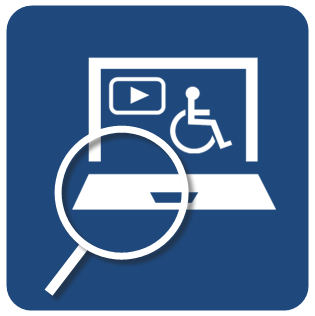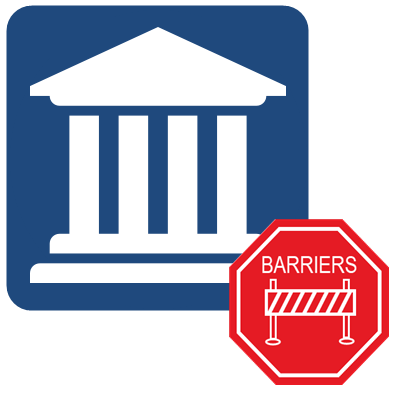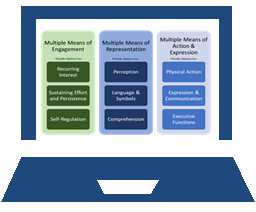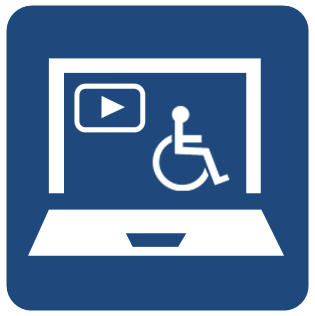Critical Analysis of Implementing Accessible Instructional Practices
Prisha Dhiman
Introduction
 Despite the growing inclusive education, many K-12 schools continue to face significant barriers in implementing accessible instructional practices. Many schools today have limited access to assistive technologies, accessibility training, and continue to use assessment formats in their classrooms that remain inaccessible. Students who are English Language Learners (ELL) would greatly benefit from instructional approaches that are intentionally designed with accessibility in mind; however, in practice, such needs are frequently unmet due to systemic challenges. ELL learners are expected to meet the same academic expectations as their classroom peers with support measures that are provided by their classroom educator (Murphy, 2023). Creating an inclusive space within the classroom begins through instructional practices that are established with the students in mind. By incorporating technology into instruction and assessments, schools would help position digital literacy as a gateway to participation in everyday life (Yuan et al., 2019). Several platforms are available for learning the English language; however, a responsive application that caters to the learner’s understanding is not yet widely implemented (Imasha et al., 2023). While general resources are abundantly available, a lack of understanding of learners’ needs impacts their engagement with the English language. As a result, educators are required to adapt existing tools and strategies for their learners while advocating for practical solutions that meet students’ linguistic needs. As an educator, I have firsthand seen and experienced the limited access to training, technologies, and accessible assessments provided in classrooms. Throughout the Bachelor of Education program, I was introduced to the principle of “what is good for some can be good for all”. This philosophy promotes the use of universally accessible strategies that will benefit a wide range of learners. Although this perspective offers a valuable framework to make classrooms more equitable and with disabilities, it also enhances the learning outcomes for all students by embedding specific accessibility and adaptability.
Despite the growing inclusive education, many K-12 schools continue to face significant barriers in implementing accessible instructional practices. Many schools today have limited access to assistive technologies, accessibility training, and continue to use assessment formats in their classrooms that remain inaccessible. Students who are English Language Learners (ELL) would greatly benefit from instructional approaches that are intentionally designed with accessibility in mind; however, in practice, such needs are frequently unmet due to systemic challenges. ELL learners are expected to meet the same academic expectations as their classroom peers with support measures that are provided by their classroom educator (Murphy, 2023). Creating an inclusive space within the classroom begins through instructional practices that are established with the students in mind. By incorporating technology into instruction and assessments, schools would help position digital literacy as a gateway to participation in everyday life (Yuan et al., 2019). Several platforms are available for learning the English language; however, a responsive application that caters to the learner’s understanding is not yet widely implemented (Imasha et al., 2023). While general resources are abundantly available, a lack of understanding of learners’ needs impacts their engagement with the English language. As a result, educators are required to adapt existing tools and strategies for their learners while advocating for practical solutions that meet students’ linguistic needs. As an educator, I have firsthand seen and experienced the limited access to training, technologies, and accessible assessments provided in classrooms. Throughout the Bachelor of Education program, I was introduced to the principle of “what is good for some can be good for all”. This philosophy promotes the use of universally accessible strategies that will benefit a wide range of learners. Although this perspective offers a valuable framework to make classrooms more equitable and with disabilities, it also enhances the learning outcomes for all students by embedding specific accessibility and adaptability.
Additionally, Bronfenbrenner’s (1977) ecological theory helps contextualize how various aspects of our community impact and influence the classrooms (Guy-Evans, 2025; Fanshawe, 2025). To help provide students with accessible education, understanding how the environment and community impact and influence the child’s development, Bronfenbrenner’s ecological system serves as a valuable framework for understanding and promoting accessible education, as the ecological theory helps showcase how interrelated environmental factors influence development (Guy-Evans, 2025; Fanshawe, 2025). This is important when discussing the implementation of accessible instructional practices, as understanding how various aspects of the microsystem, mesosystem, and macrosystem impact students, educators, and policy makers and the decisions that are made (Fanshawe, 2025). Accessibility is not limited to classroom accommodations but also extends to the inclusion of all social systems within the child’s development and beyond their schooling. This can be seen through relations such as engaging the family (microsystem), developing connections between the school and the community to foster partnerships and explore local resources (mesosystem), or through broader systemic structures such as educational policies, social/cultural outlooks towards disabilities, and advocating for change (macrosystems) (Fanshawe, 2025). The ecological theory emphasizes the importance of understanding accessibility as a process that evolves and adapts with time. This theory helps contextualize how, with time and societal changes, stakeholders of education can explore educational interventions that are culturally relevant, meaningful, and sustainable across the students’ differing environments and social settings.
Accessibility Challenges in K-12 Classrooms
 With growing migrant communities, students from various cultural backgrounds are members of the classroom. Incorporating student representation within the classroom allows students to express themselves and helps educators understand the individual needs of students to meet students where they are. There is a lack of access to assistive technologies in classrooms today, despite being in a technology-driven age (Hebert et al., 2021). The lack of access to such technologies halts progress for educators to make meaningful interventions sooner to help students progress further in their education. The inadequate teacher training on accessibility tools and strategies further impacts how educators are able to foster an inclusive and accessible classroom. Digital Game-Based Learning (DGBL) has become a huge focus of EdTech, which pulls from the virtual games entertainment format to engage learners in their learning to meet educational goals. Hebert et al. (2021) address how educators are often cited as the primary barrier for the lack of DGBL learning integration within the classroom; however, that is a surface-level understanding of technology use within the classroom and accessibility resources within the classroom. There is a lack of access to high-quality educational games, outdated devices, a connection between the curriculum and games, with minimal to no training for introducing technological tools appropriately within the classroom (Hebert et al., 2021). During the self-reporting survey conducted by Hebert et al. (2021), 91% of teachers had not received any training on using video games within the classroom. Coincidentally, the same percentage (91%) of teachers also shared that after attending the Sprite’s Quest professional development, they would use the game to support student learning.
With growing migrant communities, students from various cultural backgrounds are members of the classroom. Incorporating student representation within the classroom allows students to express themselves and helps educators understand the individual needs of students to meet students where they are. There is a lack of access to assistive technologies in classrooms today, despite being in a technology-driven age (Hebert et al., 2021). The lack of access to such technologies halts progress for educators to make meaningful interventions sooner to help students progress further in their education. The inadequate teacher training on accessibility tools and strategies further impacts how educators are able to foster an inclusive and accessible classroom. Digital Game-Based Learning (DGBL) has become a huge focus of EdTech, which pulls from the virtual games entertainment format to engage learners in their learning to meet educational goals. Hebert et al. (2021) address how educators are often cited as the primary barrier for the lack of DGBL learning integration within the classroom; however, that is a surface-level understanding of technology use within the classroom and accessibility resources within the classroom. There is a lack of access to high-quality educational games, outdated devices, a connection between the curriculum and games, with minimal to no training for introducing technological tools appropriately within the classroom (Hebert et al., 2021). During the self-reporting survey conducted by Hebert et al. (2021), 91% of teachers had not received any training on using video games within the classroom. Coincidentally, the same percentage (91%) of teachers also shared that after attending the Sprite’s Quest professional development, they would use the game to support student learning.
Not having adequate resources is a reality for many schools; however, hosting professional development sessions where teachers are able to learn would help make accessibility a core principle in mainstream classrooms (Karlin et al., 2018). Without the proper education and instructions, educators are left to unpack and understand how to help support students who would benefit from interventions early on, with little to no support. To facilitate meaningful integration of technology within the classroom, the professional development for educators must also be effective and clearly distinguishable (Karlin et al., 2018). Inclusive classrooms benefit all learners within the classroom, and assessment strategies and methods based on the needs, interests, and abilities of learners allow for an equal opportunity for learners to succeed in terms of their progress (Fuego, 2024). Teachers in the K-12 educational settings shared that teacher, educational, and child-related factors are a challenge in their occupation. There is a lack of skills in inclusion, classroom assessment, and professional development opportunities, which play a significant role in creating accessible classrooms (Fuego, 2024). Not having a clear sense of direction on how to implement inclusion policies leads to ineffective and unsustainable practices, as they are not meaningful to the classroom or the learners. These issues disproportionately affect students with exceptionalities, English Language Learners (ELL) students, and students with Individualized Education Plans (IEPs), as the resources and opportunities for teachers to advance themselves professionally are unavailable or hidden. Parris et al. (2017) explore the opportunity for ELL students to build on their language skills by incorporating inclusive and flexible grouping strategies within the teaching practice. Having ELL learners who are at different levels of their progress interact with each other and with their English-speaking peers helps improve fluency in English while fostering a welcoming and inclusive classroom culture (Parris, 2017). The barriers to accessible instructional practices for educators speak to the need for schools and boards to have inclusive classroom policies, accommodation practices, and professional development sessions available for educators to understand policies and how to implement accessible practices within their teaching.
Instructional Design
 Although the data on how effective and impactful having teacher training sessions on accessible educational tools is not reported by Siyabi and colleagues (2022), their article shares a case where it was concluded that a one-hour training on UDL integration helped participants develop flexible lessons that were accessible to students. Siyabi et al. (2022) highlight how the lack of training for inclusive practices available to educators is one of the causes of low success for students with disabilities. The study focused on special and general education graduate and undergraduate students who did not have significant experience with writing lesson plans with the UDL framework in mind. Having a short training helped participants improve their lessons by making them more accessible to all their students (Siyabi et al., 2022). This speaks to how training sessions, including short informational sessions, where educators can take away knowledge, provide an opportunity for educational and knowledge gaps to be minimized and reduced.
Although the data on how effective and impactful having teacher training sessions on accessible educational tools is not reported by Siyabi and colleagues (2022), their article shares a case where it was concluded that a one-hour training on UDL integration helped participants develop flexible lessons that were accessible to students. Siyabi et al. (2022) highlight how the lack of training for inclusive practices available to educators is one of the causes of low success for students with disabilities. The study focused on special and general education graduate and undergraduate students who did not have significant experience with writing lesson plans with the UDL framework in mind. Having a short training helped participants improve their lessons by making them more accessible to all their students (Siyabi et al., 2022). This speaks to how training sessions, including short informational sessions, where educators can take away knowledge, provide an opportunity for educational and knowledge gaps to be minimized and reduced.
Incorporating linguistic support by preteaching essential words and phrases for the lessons, defining key vocabulary, and using sentence starters or paragraph structures helps students develop confidence when participating and encourages language practice for ELL students (Parris, 2017). Having students create linguistic concepts to unpack frequent words can help students understand how different words can have various meanings depending on the context, as it encourages students to decide how to organize the language and term(s) through visual illustration, defining the term in their own words, and using sentence starters (Spencer, 2019). Spencer (2019) discusses the importance of exploring the foundations of grammar with students, as the grammar used in writing is rarely used in conversational context,s and unpacks various myths surrounding grammar education, offering a collaborative approach anchored on student interests. By incorporating student interests such as podcasting and blogging, Spencer (2019) explains the endless possibilities that help make learning engaging through tech integration.
Furthermore, with new technological advancements such as AI and virtual reality, it emerges as a promising avenue to bridge accessibility gaps and personalize learning experiences. To translate UDL’s theoretical promise into universal practice, policymakers and educators must prioritize mandatory UDL training in teacher education programs, equitable resource distribution, and cross-sector collaborations” (Lournco et al., 2025, p. 701). Artificial Intelligence (AI) is a digital tool that has gained significant popularity and can be used as an assistive tool to assist with idea generation and implementation. By providing educators with a chance to immerse themselves in UDL training and practices, educators have the opportunity to discover new skills, resources, and strategies while exploring new technologies with support.
Digital Solutions
 Through the implementation of accessible instructional practices, educators can utilize digital tools to develop flexible lesson plans that accommodate diverse learners and support student success. Digital learning environments enhance the educational experience of ELL students as online environments help cultivate digital and informational literacy competencies that assist students when navigating through real-world contexts (Parris et al., 2017). This helps provide teachers with a sense of direction on where to direct their teaching and personal learning. AI underpins various applications and has developed rapidly in nearly all aspects of technology use, such as mobile applications. There has been substantial conversation about how to incorporate AI to create engaging content and lessons within the classroom, which keeps the conversation of AI and education student-focused; however, another aspect of AI and education that Mintz (2023) discusses in their research is teacher-focused AI use to support educators.
Through the implementation of accessible instructional practices, educators can utilize digital tools to develop flexible lesson plans that accommodate diverse learners and support student success. Digital learning environments enhance the educational experience of ELL students as online environments help cultivate digital and informational literacy competencies that assist students when navigating through real-world contexts (Parris et al., 2017). This helps provide teachers with a sense of direction on where to direct their teaching and personal learning. AI underpins various applications and has developed rapidly in nearly all aspects of technology use, such as mobile applications. There has been substantial conversation about how to incorporate AI to create engaging content and lessons within the classroom, which keeps the conversation of AI and education student-focused; however, another aspect of AI and education that Mintz (2023) discusses in their research is teacher-focused AI use to support educators.
Additionally, using assistive tools such as text-to-speech or speech-to-text applications can help students complete their learning tasks in a modified manner, allowing students to showcase their learning through tools to support their knowledge, while being more cost-efficient. Integrating technology also provides students with flexible assessments, allowing students to complete their task through a medium they feel strong or confident in. Digital tools such as Audacity (n.d.) or GarageBand (Apple, 2025b), where students can use audio editing programs and “read a script or use sentence stems in the moment and the listener never knows about it”, build oral language development and confidence by providing students a chance to collaborate and create meaningful media (Spencer, 2019, p. 27). Using digital audiobook platforms such as Playaway (2025), Audible (2025), or Libby (n.d.), multimedia presentation tools such as Google Slides (n.d.), PowerPoint (Microsoft, 2025), Canva (2025), iMovie (Apple, 2025a), or digital annotation tools for effective note-taking, such as Kami (2025) or Hypothesis (2025), can work around barriers and limitations while integrating UDL-based edtech tools within one’s practice (Novak & Pettit, 2024). The interaction of technology in the classrooms typically involves the introduction of a commercial tool that can be utilized within classrooms; however, Mintz (2023) shares that the commercialization of education may cause concerns for privacy, surveillance, and potential exploitation (p. 329). Incorporating digital resources that are open-source and cost-effective can help create an equitable classroom by providing students with options, reducing opportunity gaps.
Conclusion
Without addressing the systemic barriers that prevent equitable access to technology, training, and assessment in K-12 classrooms, incorporating inclusive education seems like an idealistic approach. As discussed, the lack of assistive technologies, limited accessibility training for teachers, and the continued reliance on assessment practices inadvertently exclude students with diverse learning needs. The barriers to accessible education are not minor concerns and should be advocated for. By using the frameworks of Universal Design for Learning and Bronfenbrenner’s ecological system, educators and educational stakeholders can cultivate and curate classrooms as spaces where students can meaningfully participate and succeed in their own ways. Both theories emphasize the belief that education is not a one-size-fits-all approach, and that thoughtful, responsive instructional designs for classrooms help students feel welcomed and represented, encouraging students to build on their strengths and attain their personal goals. These theoretical approaches encourage sustained institutional investment, policy reform, and meaningful professional development. Creating accessible learning environments is a commitment and step towards educational equity and justice as student populations continue to become increasingly diverse. The integration of assistive technologies and inclusive practices should become a core practice. With personal commitments, resources, and the right training, educators can help foster proactive learning environments where students can help co-create spaces that push beyond systemic barriers.
References
Apple (2025a). iMovie. https://www.apple.com/ca/imovie/
Apple (2025b). What is GarageBand on Mac? https://support.apple.com/en-ca/guide/garageband/gbndff5345d9/mac
Audacity (n.d.). https://www.audacityteam.org/download/
Audible (2025). https://www.audible.ca/
Canva (2025). About Canva: Empowering the world to design. https://www.canva.com/about/
Doran, P. R. (2015). Language accessibility in the classroom: how UDL can promote success for linguistically diverse learners. Exceptionality Education International, 25(3). https://doi.org/10.5206/eei.v25i3.7728
Fanshawe, M. (2025). “This is me”: Using Bronfenbrenner’s systems model to prioritize student and stakeholders’ voices in the co-design of Individualized Education Programs. Exceptional Children. https://doi.org/10.1177/00144029251350074
Fuego, M. (2024). Inclusive classroom assessment: k to 12 teachers’ practices and challenges. Psych Educ, 18(3), 281-301. https://papers.ssrn.com/sol3/papers.cfm?abstract_id=4783780 Guy-Evans, O. (2025, May 6). Bronfenbrenner’s ecological systems theory. Simply Psychology. https://www.simplypsychology.org/bronfenbrenner.html
Google (n.d.). Google Slides. https://workspace.google.com/intl/en_ca/products/slides/
Hébert, C., Jenson, J., & Terzopoulos, T. (2021). “Access to technology is the major challenge”: Teacher perspectives on barriers to DGBL in K-12 classrooms. E-Learning and Digital Media, 18(3), 307-324. https://doi.org/10.1177/2042753021995315
Hypothesis (2025). Turn Content Into Conversations. https://web.hypothes.is/
Imasha, A., Wimalaweera, K., Maddumage, M., Gunasekara, D., Manathunga, K., Ganegoda, D., Hao, T., Hemmje, M., García-Holgado, A., Area-Moreira, M., González-González, C. S., García-Peñalvo, F. J., Sciarrone, F., Spaniol, M., Fernández-Manjón, B., & Li, F. (2023). Pocket English Master – Language Learning with Reinforcement Learning, Augmented Reality and Artificial Intelligence. In Learning Technologies and Systems (Vol. 13869, pp. 74–85). Springer International Publishing AG. https://doi.org/10.1007/978-3-031-33023-0_7
Kami (2025). Elevate instruction. Reach every learner. https://www.kamiapp.com/
Karlin, M., Ottenbreit-Leftwich, A., Ozogul, G., & Liao, Y. (2018). K–12 technology leaders: Reported practices of technology professional development planning, implementation, and evaluation. Contemporary Issues in Technology and Teacher Education, 18(4). https://citejournal.org/volume-18/issue-4-18/current-practice/k-12-technology-leaders-reported-practices-of-technology-professional-development-planning-implementation-and-evaluation
Libby (n.d.). https://libbyapp.com/interview/welcome#doYouHaveACard
Lourenço, C., Ben Rakaa, O., Bassiri, M., & Lotfi, S. (2025). Unravelling the impact of Universal Design for Learning on the inclusion of students with disabilities in physical education: A systematic review. Physical Education Theory and Methodology, 25(3), 691–704. https://doi.org/10.17309/tmfv.2025.3.27
Microsoft (2025). PowerPoint. https://www.microsoft.com/en-us/microsoft-365/powerpoint
Mintz, J., Holmes, W., Liu, L., & Perez-Ortiz, M. (2023). Artificial intelligence and k-12 education: possibilities, pedagogies and risks. Computers in the Schools, 40(4), 325–333. https://doi.org/10.1080/07380569.2023.2279870
Murphy, E. M. (2023). A Qualitative Descriptive Study of Teachers’ Descriptions of Their Preparedness Needs to Incorporate Technology to Support ELLs in the General Education Classroom. ProQuest Dissertations & Theses. http://search.proquest.com.uproxy.library.dc-uoit.ca/dissertations-theses/qualitative-descriptive-study-teachers/docview/2923592793/se-2
Nave, L. (2021). Universal Design for Learning: UDL in online environments: the how of learning. Journal of Developmental Education, 44(3), 34–35
Novak, K., & Pettit, M. (2024, September 24). Using Edtech tools to differentiate learning. Edutopia. https://www.edutopia.org/article/using-udl-aligned-edtech-tools
Parris, H., Estrada, L., Honigsfeld, A., & Bergamann, J. (2017). ELL frontiers: using technology to enhance instruction for English learners (1st ed.). Corwin. https://doi.org/10.4135/9781506343549
Playaway Products (2025). Playaway. https://www.playaway.com/
